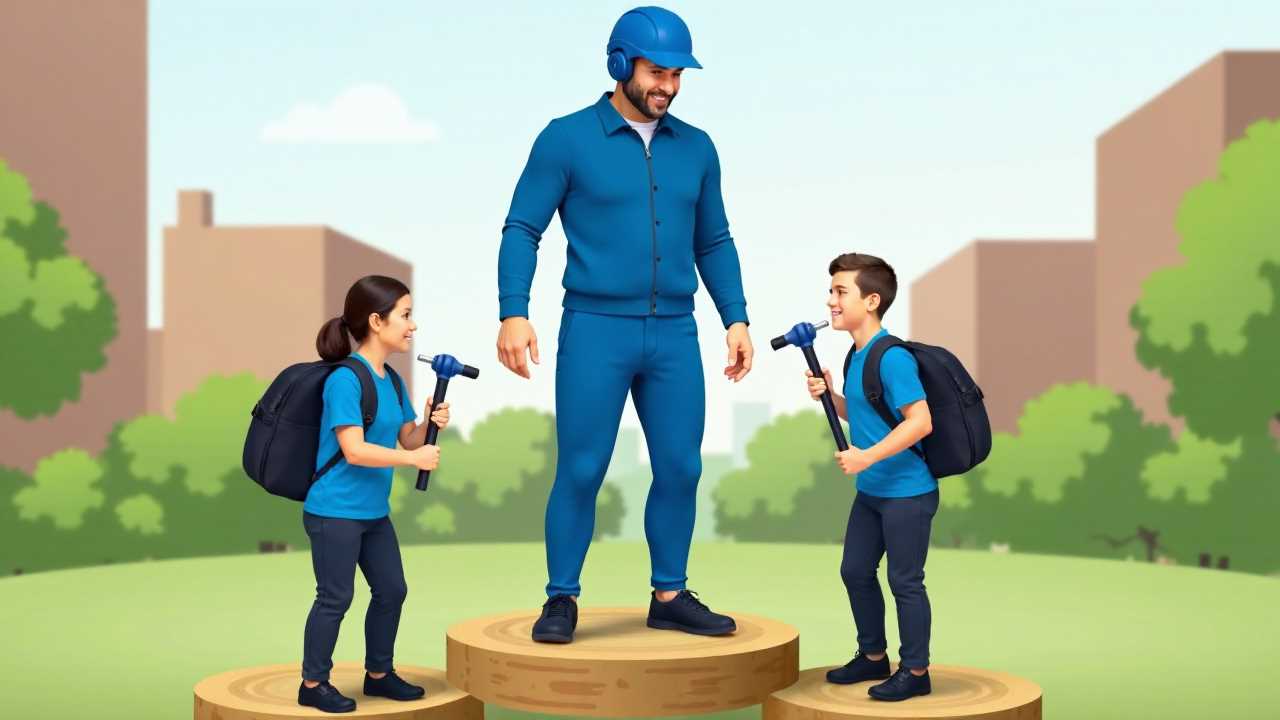
Understanding Adaptive Physical Education Equipment
Adaptive physical education equipment plays a vital role in creating inclusive sports environments for individuals with diverse needs. This specialized equipment is designed to meet the unique requirements of students with disabilities, ensuring they can participate fully in physical activities. By incorporating modified tools and assistive devices, we can facilitate a more engaging and supportive atmosphere for all participants.
The essence of adaptive physical education lies in its ability to tailor activities to suit individual capabilities, promoting not only physical health but also social interaction and emotional well-being. This approach fosters a sense of belonging and encourages students to develop their skills at their own pace.
The Importance of Inclusive Sports
Inclusive sports are crucial for promoting teamwork, cooperation, and communication among participants. By utilizing adaptive physical education equipment, we can create opportunities for individuals with disabilities to engage in sports alongside their peers. This integration not only benefits those with disabilities but also enriches the experiences of all participants.
In inclusive sports settings, the focus shifts from competition to participation. This shift allows everyone to enjoy the benefits of physical activity, regardless of their abilities. The use of adaptive equipment ensures that all students can engage in activities that are both enjoyable and challenging, fostering a sense of achievement and self-worth.
Modified Tools for Enhanced Participation
The development of modified tools is essential for ensuring that students with disabilities can participate in physical activities effectively. These tools are designed to accommodate various physical limitations, enabling individuals to engage in sports and recreational activities that may have previously been inaccessible to them.
Examples of modified tools include lightweight sports wheelchairs, adaptive bicycles, and specially designed balls that are easier to grip and throw. These innovations not only enhance participation but also promote skill development and physical fitness. By providing students with the right tools, we empower them to take charge of their physical education experience.
Assistive Devices: A Key Component
Assistive devices are integral to adaptive physical education, as they help students overcome barriers to participation. These devices can range from simple adaptations, such as modified grips on equipment, to more complex technologies, like electronic mobility aids.
The use of assistive devices allows students to engage in a wide variety of activities, from team sports to individual exercises. By ensuring that all students have access to the necessary tools, we create an environment where everyone can thrive. This commitment to inclusivity is essential for fostering a positive and supportive atmosphere in physical education settings.
Therapeutic Activities for Holistic Development
Incorporating therapeutic activities into adaptive physical education programs is essential for promoting overall well-being. These activities focus on physical, emotional, and social development, providing students with opportunities to improve their motor skills, build confidence, and develop social connections.
Therapeutic activities can include modified games, yoga, and sensory integration exercises that cater to individual needs. By addressing the holistic development of students, we create a more enriching educational experience that goes beyond physical fitness. This comprehensive approach ensures that all students feel valued and supported in their journey toward personal growth.
Accessible Play: Creating Opportunities for All
Accessible play is a fundamental aspect of adaptive physical education, as it ensures that all students can engage in recreational activities. By designing inclusive play environments, we promote social interaction and physical activity among students of all abilities.
Creating accessible play spaces involves incorporating adaptive equipment, such as wheelchair-accessible playgrounds and sensory-friendly areas. These spaces encourage exploration and creativity, allowing students to engage in play that is both fun and beneficial for their development. By prioritizing accessible play, we foster a sense of community and belonging among all participants.
Sensory Integration: A Vital Component
Sensory integration is an important consideration in adaptive physical education, as many students with disabilities may have sensory processing challenges. By incorporating sensory-friendly activities and equipment, we can create an environment that supports the diverse needs of all students.
Activities that focus on sensory integration can include obstacle courses, tactile games, and calming spaces designed to help students regulate their sensory experiences. By addressing sensory needs, we promote a more inclusive and supportive atmosphere that allows all students to thrive.
The Future of Adaptive Physical Education
The role of adaptive physical education equipment in inclusive sports and therapeutic activities cannot be overstated. By prioritizing the needs of all students and providing the necessary tools and resources, we can create an environment that fosters participation, growth, and connection.
As we continue to innovate and develop new adaptive equipment and strategies, we must remain committed to inclusivity and accessibility. By doing so, we empower individuals with disabilities to engage fully in physical education, promoting a healthier and more active lifestyle for everyone. The future of adaptive physical education is bright, and together, we can make a lasting impact on the lives of countless students.
 Careers in EducationElementary EducationHigh School EducationEducational TechnologyTeaching StrategiesSpecial EducationPrivacy PolicyTerms And Conditions
Careers in EducationElementary EducationHigh School EducationEducational TechnologyTeaching StrategiesSpecial EducationPrivacy PolicyTerms And Conditions
